Top 10 Weird but Scientifically Sound Places to Find Gemstones
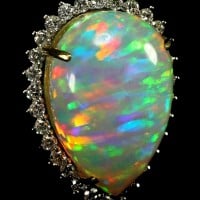
Proven.
Spacecrafts orbiting Mars found opal on Mars and it was a fascinating scientific discovery because opal on Mars proved there was water on the Red planet and maybe life. Opal is hydrated silica (opal consists of at least 3-10% water) and this also means that Mars may have supported life. Water, including acidic water, got captured and encapsulated in microscopic spheres inside the opal crystals. So opal on Mars answered 2 questions: Is/was there water on Mars? Yes. Is/was there life on Mars? Maybe.
The spectrometer on board the Mars Reconnaissance Orbiter detected Opal across large region of Mars, mostly around Mars' "Grand Canyon" - a large Martian canyon system called Valles Marineris.
Also, NASA's Mars rover Spirit, active from 2004 to 2010, found more opal-like minerals (opaline silicates) in Gusev Crater.
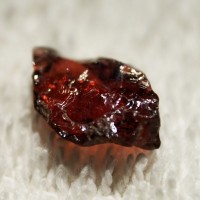
Proven.
Yes, millions of tiny ants mine some of the best garnets!
Where? In Arizona and Utah, for example. Ant Hill Garnet is a novelty gem with intense ruby-red color. Ant garnet looks awesome.
Ant Hill Garnets are found on and around the ant hills. While excavating their underground passages, the ants encounter the garnets, haul them to the surface and discard them. The rain washes the garnets clean and moves them around the hill, where garnets can accumulate in large numbers.
What are you waiting for? Go and collect them. The ants already mined them for you!
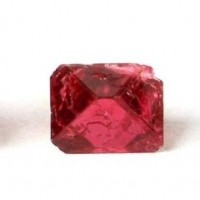
Proven.
It was discovered by NASA's Moon Mineralogy Mapper (M3) on India's Chandrayaan-1 spacecraft.
The rock was discovered on the far side of the moon, but shortly after also in other areas. Researchers weren't looking for spinel on the moon. They were focused on mapping the minerals olivine (peridot) and pyroxene, which were already known to exist on the moon. As expected, the researchers located olivine and pyroxene deposits.
But they also found massive deposits of spinel in two areas about 1 kilometer by 1 kilometer (a little more than 1/2 mile by 1/2 mile) each, on the rim of the Moscoviense Basin on the moon's far side.
Researchers are convinced that the spinel formed on the moon because the deposit is too large to have formed elsewhere in the solar system and been delivered to the moon.
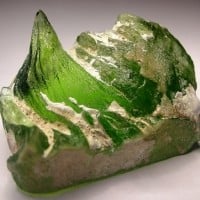
Proven.
The Red planet is rich in green gems! Large outcrops of Peridot/Olivine were found on Mars - an instrument aboard a NASA spacecraft (Mars Global Surveyor) spotted an area of 19,000 square miles (30,000 square km) rich in olivine in the Nili Fossae region of Mars. The gem was on the surface of the planet, probably thrust up from below the ground by fractures and faults. Or, it may be linked to the Isidis impact basin, formed long ago by an asteroid or comet (the broken nature of the ground at Nili Fossae may be linked to the Isidis impact). Nili Fossae is thought to have formed at least 3.6 billion years ago.
The researches wrote: "If the olivine was exposed shortly after the impact event, the martian surface may have been dry and cold for more than three billion years, but if the olivine was recently uncovered... it could have been cold and dry for as little as a few thousand years."

Proven.
Yes, Peridot was discovered on the Moon.
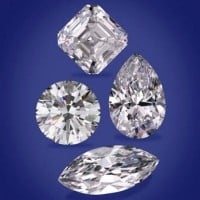
NOT proven, but "rainfalls of diamonds have been suggested to occur on Jupiter, as well as on Saturn and ice giants Uranus and Neptune." - wiki (Jupiter, ch. Internal structure)
Yay, it's raining diamonds on Jupiter! Take your umbrella and go!
Weather report on Jupiter: "Severe diamond storm alert"

Proven.
This asteroid was visited by a spacecraft that found peridot/olivine on it.
Asteroid 25143 Itokawa is a "stony sub-kilometer asteroid, classified as near-Earth object of the Apollo group and potentially hazardous asteroid, that measures approximately 350 meters in diameter. It was the first asteroid to be the target of a sample return mission, the Japanese space probe Hayabusa, and the smallest asteroid photographed and visited by a spacecraft." - wiki
Proven.
Synthetic gems aren't fake gems, they are real gems grown in labs.
If interested, visit the list - Top 10 Gemstones with Synthetic Varieties

On Saturn, look for this sign: "Diamond Mining THIS WAY"
NOT proven, but "rainfalls of diamonds have been suggested to occur within Saturn, as well as in Jupiter and ice giants Uranus and Neptune." - wiki (Saturn, ch. Internal structure)

Proven.
Peridot has been observed as interstellar dust. This "dust" is seen in the tails of comets.
In 2004, Stardust (NASA spaceship) took samples from a comet known as Wild2, which is 4.5 billion years old. Samples were studied back on Earth and they included olivine (peridot).
In 2005, traces of olivine (peridot) were found on a comet called Tempel1 that orbits the sun every five and a half years.
Seems the mineral olivine (peridot) is widespread in outer space and quite possibly was present at the creation of many planets. Perhaps even our
planet.

Proven.
Disks around young stars are, again, interstellar dust. And it contains olivine (peridot).